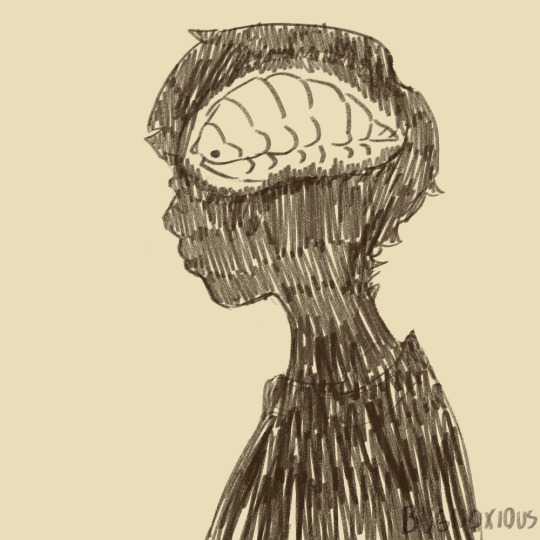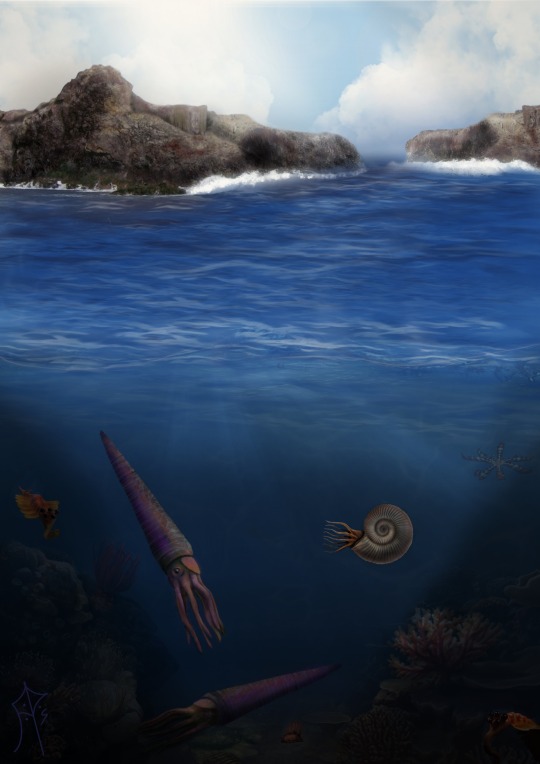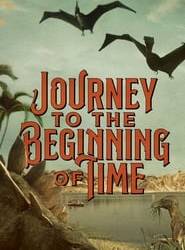#trilobita
Explore tagged Tumblr posts
Text
Anyone here who's into Trilobites, i got a video for you
Based on the new trilobite soft tissues discovered in a Middle cambrian Morrocan specimen that's been buried in a volcano.
Full video on my youtube channel!
https://scitechdaily.com/truly-astonishing-discovery-of-500-million-year-old-pompeii-trilobite-fossils-shake-up-scientific-understanding-of-the-long-extinct-group/
https://www.researchgate.net/publication/381772319_Rapid_volcanic_ash_entombment_reveals_the_3D_anatomy_of_Cambrian_trilobites
Sources ^
#3danimation#animation#protolenus#paleoart#paleontology#trilobite#paleozoic#science#nature#ocean#palaeoblr#arthropod#trilobita
4K notes
·
View notes
Text
youtube
Mezolit by Thy Catafalque, live at Fekete Zaj - Filmed by Mihaszna Film.
Esőlámpás
Kel keleti szél
Köd utánam
Szamojéd freskó
Jura
Mezolit
Embersólyom
A bolyongás ideje
Sirály
Kék ingem lobogó
Trilobita
Fekete mezők
Piros-sárga
Szarvas
Fehérvasárnap
#music#hungarian music#thy catafalque#tamás kátai#andrás nagy#andrás vörös#bálint bokodi#dudás ivett#gyula vasvári#gábor dudás#michaela bos#lambert lédeczy#martina veronika horváth#ádám forczek#dániel szabó#józsef kun#rajmund katona#concert#video#mihaszna film#Youtube
39 notes
·
View notes
Text
Também conhecido como Platerodrilus; estes são um gênero de besouros da família Lycidae. As fêmeas e larvas têm um corpo achatado e escuro com grandes escamas sobre a cabeça, lembrando trilobitas , daí os nomes informais besouro trilobita , larva trilobita ou larva trilobita de Sumatra.
17 notes
·
View notes
Text

Silurian seas | Oceanos Silurianos
🇬🇧
The Silurian Period also marked a critical phase in Earth's history with significant developments in marine life. During this period, marine environments witnessed the diversification of invertebrates, including prominent groups like brachiopods and trilobites. Jawed fish, both cartilaginous and bony, emerged and began to dominate marine ecosystems. Graptolites, cephalopods such as nautiloids, and reef-building organisms like corals were prevalent. Sea scorpions (eurypterids) were notable marine arthropods.
The Silurian experienced global sea level changes, influencing the distribution and diversity of marine life. These marine ecosystems set the stage for further evolutionary events, laying the groundwork for the subsequent Devonian Period and the rise of more complex marine life forms.
🇧🇷
O Período Siluriano também marcou uma fase crucial na história da Terra com desenvolvimentos significativos na vida marinha. Durante esse período, os ambientes marinhos testemunharam a diversificação de invertebrados, incluindo grupos proeminentes como braquiópodes e trilobitas. Peixes com mandíbulas, tanto cartilaginosos quanto ósseos, emergiram e começaram a dominar os ecossistemas marinhos. Graptólitos, cefalópodes como nautiloides, e organismos construtores de recifes como corais eram prevalentes. Escorpiões-do-mar (euripterídeos) eram artrópodes marinhos notáveis.
O Siluriano experimentou mudanças globais nos níveis do mar, influenciando a distribuição e diversidade da vida marinha. Esses ecossistemas marinhos prepararam o terreno para eventos evolutivos subsequentes, estabelecendo as bases para o período Devoniano e o surgimento de formas de vida marinhas mais complexas.
#science#paleontology#geology#paleobotany#universe#biology#earth#digital painting#space#artwork#silurian period#paleozóico#paleobotânica#paleozoic#paleontologia#paleoart#arte digital#original art#artists on tumblr#art#digital art#my art#sea#ocean#marine biology#marine life
25 notes
·
View notes
Text

There absolutely are NOT still living trilobites. Not only is the class Trilobita extinct, so is the subphylum Trilobitomorpha and the entire Artiopoda clade. What alternate timeline are you posting from?????

19K notes
·
View notes
Photo

VERY RARE 4" Redlichia chinensis Trilobite Fossil – Muchnag Formation, Cambrian – Xiangxi, Hunan, China – Genuine + COA!
VERY RARE: 4" Redlichia chinensis Trilobite Fossil – Muchnag Formation, Cambrian – Xiangxi, Hunan, China
📜 From the Prestigious Alice Purnell Collection! 📜
✅ 100% Genuine Specimen – Comes with a Certificate of Authenticity (COA)
📏 Scale Rule / Cube = 1cm (Full sizing details in photos)
📸 You will receive the exact fossil shown in the images
🦠 Fossil Overview:
This is a VERY RARE and exceptionally well-preserved 4" Redlichia chinensis Trilobite Fossil, dating back to the Cambrian Period (~520 million years ago). It was discovered in the Muchnag Formation, Xiangxi, Hunan Province, China, a site well known for its extraordinary trilobite diversity and preservation.
Redlichia chinensis is a species of trilobite recognized for its elongated body, spiny cephalon (head), and segmented thorax, which helped it thrive in Cambrian marine environments. This specimen showcases a beautifully preserved exoskeleton, with fine details on the segments and spines, making it an exceptional display or study piece.
This fossil originates from the Alice Purnell Collection, one of the largest and most renowned fossil collections in the world. Fossils from this collection are highly collectible and hold significant paleontological value.
🪨 Geological & Scientific Details:
Species: Redlichia chinensis
Group: Trilobita (Marine Arthropods)
Age: Cambrian Period (~520 Million Years Ago)
Formation: Muchnag Formation
Location: Xiangxi, Hunan Province, China
Fossil Features: Exceptionally well-defined cephalon, thorax, and pygidium with clear segmentation
Preservation: Outstanding condition with intricate exoskeletal details
Trilobites like Redlichia chinensis were among the earliest and most successful marine arthropods, thriving in the Cambrian seas. Their robust exoskeletons and evolutionary adaptability helped shape early marine ecosystems.
🛒 Why Buy This Fossil?
✔ VERY RARE 4" Redlichia chinensis Trilobite Fossil – Sourced from Xiangxi, Hunan, China
✔ Prestigious Alice Purnell Collection provenance – Highly collectible
✔ Authentic Cambrian Fossil – 520-million-year-old prehistoric relic
✔ Perfect for Collectors, Museums, and Educational Displays
✔ 100% Genuine & Certified Fossil – Comes with a Certificate of Authenticity (COA)
✔ Great Investment Piece – Fossils of this rarity and quality are only increasing in value
📦 Shipping & Packaging:
Securely packed to ensure safe arrival
Tracked & insured shipping for peace of mind
Worldwide shipping available! 🌍
🔬 Don’t miss out on this scientifically significant, rare fossil! Perfect for serious collectors, museums, or as a unique display piece.
📥 Buy with confidence – 100% authentic, fully certified, and ready to ship!
🔎 Check out our other fossils & rare specimens!
🔥 VERY RARE 4" Redlichia chinensis Trilobite Fossil – Once it’s gone, it’s gone! 🔥
#Redlichia chinensis Trilobite#Cambrian Fossil#Muchnag Formation#Xiangxi Fossil#Hunan Province Fossils#Chinese Trilobite#Prehistoric Arthropod#Fossil Collector#Paleontology#Alice Purnell Collection
0 notes
Text
Espreitador da Costa Náufraga/ Drownyard Lurker

Tipo de criatura: Eldrazi Trilobita
Custo de mana: 7 incolores e/ou de quaisquer cores
7/7 de Poder e Resistência
Por que ela é interessante? Essa criatura tem vigilância, fica desvirada mesmo depois de atacar. Quando você conjurar ou reciclar essa criatura você vai criar uma ficha de Prole Eldrazi 0/1 que poderá ser sacrificada para gerar uma mana desprovida para seu uso. Para reciclá-la você precisa pagar 3 manas (1 azul) e descartá-la, então você compra uma carta como uma espécie de troca dessa forma. Ele vale a pena mais por ser justamente uma criatura grande e forte para te defender.
Preço da carta: em torno de 0,05 até 8,00
Disponível em Português
Link: https://www.ligamagic.com.br/?view=cards%2Fsearch&card=Espreitador+da+Costa+N%C3%A1ufraga&tipo=1
Até a próxima postagem, Ulli e Thiago
0 notes
Text
https://tanase.tapinarii.ro/index.php/2024/08/06/elvis-presley-si-trilobita-o-poveste-de-dragoste-atomica/
0 notes
Text

disguise
isopod brain isopod brain
2K notes
·
View notes
Text
Una Pompei trilobita conserva fossili squisiti nella cenere vulcanica Una Pompei trilobita: il tesoro nascosto nella cenere vulcanica Centinaia di milioni di anni fa, i trilobiti dominavano la Terra con i loro esoscheletri, lasciando dietro di sé innumerevoli fossili ora studiati dai paleontologi. Tuttavia, certi aspetti dell’anatomia di questi antichi artropodi rimanevano oscuri agli scienziati. Una scoperta eccezionale in Marocco Un gruppo di fossili di trilobiti sepolti nella cenere vulcanica in Marocco offre una straordinaria visione degli antichi marinai segmentati. I ritrovamenti sono paragonati ai Romani di Pompei congelati durante l’eruzione del Vesuvio, secondo uno studio pubblicato su Scienza. Dettagli straordinari nella roccia vulcanica Le rocce vulcaniche hanno conservato
0 notes
Text
a lil sneak peak on what i'm working on now 👀
alt: Camera (shallow focus distance) pans from right to left, close up to an approximately 2cm long trilobite slightly moving forward while its antenna and butt jiggles (palaeolenus) among a tight cluster of Neobolus brachiopods (not mollusks but they have a similar bivalved shell that resembles clams except the top and bottom shells are not exactly the same, but the left and right is symmetrical unlike in clams). on some of the brachiopod shells are even smaller parasitic organisms of unclear affinity, only recognizable from their conical pointy tubes
#paleoart#palaeoblr#trilobita#trilobite#brachiopod#neobolus#cambrian period#paleontology#blender#3d art#animation
471 notes
·
View notes
Text

Biodiversity expands! | A biodiversidade se expande!
🇬🇧
The Ordovician Period is the second geological period of the Paleozoic Era, spanning from approximately 485.4 to 443.8 million years ago. It follows the Cambrian Period and precedes the Silurian Period.
During the Ordovician, Earth's landmasses were still clustered together in a supercontinent called Gondwana. The continents were located closer to the South Pole, and much of the Earth's surface was covered by a vast ocean known as the Iapetus Ocean. The climate during this period was relatively stable and warmer than the preceding Cambrian, with moderate temperatures and a generally shallow sea level.
It was a time of significant evolutionary diversification, marking the rise of various marine life forms. The seas were populated by a diverse array of invertebrates, including trilobites, brachiopods, mollusks, and echinoderms. Trilobites, in particular, were highly successful and abundant during this period. Early jawless fish, such as the ostracoderms, began to appear in the oceans, representing a crucial step in the evolution of vertebrates. However, these early fish were still quite primitive compared to later fish that would dominate the seas in subsequent periods.
The continents were gradually drifting, contributing to changes in oceanic circulation patterns and climate. By the end of the period, Gondwana began to experience fragmentation, marking the initial steps toward the eventual formation of different landmasses. These continental movements had profound implications for marine life and ecosystems.
The Ordovician-Silurian extinction event primarily affected marine life, and the impact on terrestrial environments and plants is not as well-documented as it is for marine organisms. During the Ordovician, land was sparsely populated by simple plants, and more complex terrestrial ecosystems would evolve in the subsequent periods.
🇧🇷
O Período Ordoviciano é o segundo período geológico da Era Paleozoica, abrangendo aproximadamente de 485,4 a 443,8 milhões de anos atrás. Ele sucede o Período Cambriano e antecede o Período Siluriano.
Durante o Ordoviciano, os continentes da Terra ainda estavam agrupados em um supercontinente chamado Gondwana. Os continentes estavam localizados mais próximos ao Polo Sul, e grande parte da superfície terrestre estava coberta por um vasto oceano conhecido como Oceano Iapetus. O clima durante esse período era relativamente estável e mais quente do que o Cambriano anterior, com temperaturas moderadas e um nível do mar geralmente raso.
Foi um período de significativa diversificação evolutiva, marcando o surgimento de várias formas de vida marinhas. Os mares eram habitados por uma variedade de invertebrados, incluindo trilobitas, braquiópodes, moluscos e equinodermos. Os trilobitas, em particular, foram altamente bem-sucedidos e abundantes durante esse período. Peixes primitivos sem mandíbula, como os ostracodermas, começaram a aparecer nos oceanos, representando um passo crucial na evolução dos vertebrados. No entanto, esses primeiros peixes ainda eram bastante primitivos em comparação com os peixes posteriores que dominariam os mares nos períodos subsequentes.
Os continentes estavam gradualmente se movendo, contribuindo para mudanças nos padrões de circulação oceânica e no clima. No final do período, Gondwana começou a se fragmentar, marcando os passos iniciais em direção à eventual formação de diferentes massas terrestres. Esses movimentos continentais tiveram profundas implicações para a vida marinha e os ecossistemas.
O evento de extinção Ordoviciano-Siluriano afetou principalmente a vida marinha, e o impacto em ambientes terrestres e plantas não está tão bem documentado quanto para os organismos marinhos. Durante o Ordoviciano, a terra era escassamente povoada por plantas simples, e ecossistemas terrestres mais complexos evoluiriam nos períodos subsequentes.
#science#paleontology#paleobotany#universe#digital painting#geology#biology#earth#space#artwork#paleoart#ocean
18 notes
·
View notes
Text
Assistir Filme Viagem à Pré-História Online fácil
Assistir Filme Viagem à Pré-História Online Fácil é só aqui: https://filmesonlinefacil.com/filme/viagem-a-pre-historia/
Viagem à Pré-História - Filmes Online Fácil

O mais jovem dos quatro meninos de um dia encontra um fóssil de trilobita. Então, seu amigo mais velho os leva e visitam uma exposição de dinossauros no Museu de História Natural de Nova York. Eles então vão remar no Central Park Lake, onde encontraram uma caverna secreta e então começa uma jornada pela pré-história, até o começo dos tempos, para ver trilobites reais ao vivo. E continuam remando em um mundo pré-histórico maravilhoso, cheio dos dinossauros que acabaram de ver no museu. (e Livre - Estimado Livre)
0 notes
Photo

RARE 4.5" Zlichovaspis (Odontochile) Trilobite Fossil – Lhandar Formation, Lower Devonian – Atchana, Morocco – Genuine + COA!
RARE: 4.5" Zlichovaspis (Odontochile) Trilobite Fossil – Lhandar Formation, Lower Devonian – Atchana, Morocco
📜 From the Prestigious Alice Purnell Collection! 📜
✅ 100% Genuine Specimen – Comes with a Certificate of Authenticity (COA)
📏 Scale Rule / Cube = 1cm (Full sizing details in photos)
📸 You will receive the exact fossil shown in the images
🦠 Fossil Overview:
This is a RARE and exceptionally well-preserved 4.5" Zlichovaspis (Odontochile) Trilobite Fossil, dating back to the Lower Devonian Period (Pragian Stage) (~410 million years ago). It was discovered in the Lhandar Formation, Atchana, Morocco, a site well known for its exceptional trilobite discoveries.
Zlichovaspis, sometimes classified under Odontochile, is a genus of trilobite recognized for its elongated body, well-defined cephalon (head), and broad pygidium (tail section). These trilobites thrived in marine environments during the Devonian period, developing streamlined forms suited for movement across the sea floor. This specimen showcases a well-preserved exoskeleton, with detailed segmentation and ridges, making it a stunning display or study piece.
This fossil originates from the Alice Purnell Collection, one of the largest and most renowned fossil collections in the world. Fossils from this collection are highly collectible and hold significant paleontological value.
🪨 Geological & Scientific Details:
Species: Zlichovaspis (Odontochile) sp.
Group: Trilobita (Marine Arthropods)
Age: Lower Devonian Period (~410 Million Years Ago)
Formation: Lhandar Formation
Location: Atchana, Morocco
Fossil Features: Well-defined cephalon, thorax, and pygidium with clear segmentation
Preservation: Exceptional condition with natural fossilization patterns
Trilobites like Zlichovaspis were among the most successful marine arthropods, thriving for millions of years. Their advanced adaptations, including protective exoskeletons and segmented bodies, allowed them to dominate prehistoric oceans.
🛒 Why Buy This Fossil?
✔ RARE 4.5" Zlichovaspis (Odontochile) Trilobite Fossil – Sourced from Atchana, Morocco
✔ Prestigious Alice Purnell Collection provenance – Highly collectible
✔ Authentic Lower Devonian Fossil – 410-million-year-old prehistoric relic
✔ Perfect for Collectors, Museums, and Educational Displays
✔ 100% Genuine & Certified Fossil – Comes with a Certificate of Authenticity (COA)
✔ Great Investment Piece – Fossils of this rarity and quality are only increasing in value
📦 Shipping & Packaging:
Securely packed to ensure safe arrival
Tracked & insured shipping for peace of mind
Worldwide shipping available! 🌍
🔬 Don’t miss out on this scientifically significant, rare fossil! Perfect for serious collectors, museums, or as a unique display piece.
📥 Buy with confidence – 100% authentic, fully certified, and ready to ship!
🔎 Check out our other fossils & rare specimens!
🔥 RARE 4.5" Zlichovaspis (Odontochile) Trilobite Fossil – Once it’s gone, it’s gone! 🔥
#Zlichovaspis Trilobite#Odontochile Trilobite#Moroccan Trilobite Fossil#Lower Devonian Fossil#Lhandar Formation#Atchana Fossil#Prehistoric Arthropod#Fossil Collector#Paleontology#Alice Purnell Collection
0 notes
Text
Trilobita fosszília Skye-on
NOT COUNTING ROCKS (unless it’s a specific fossil from a time period you can name) or buildings (you cannot hold those)…
97 notes
·
View notes